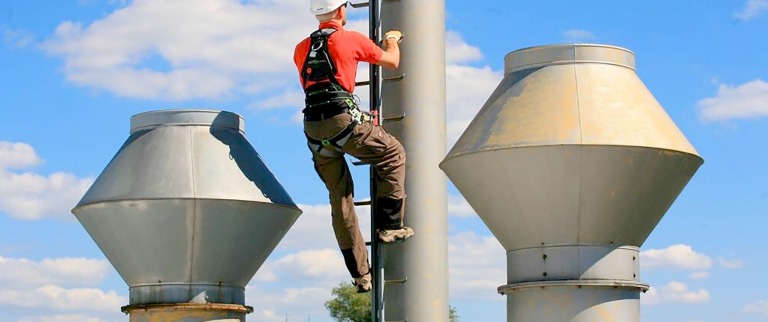January 13,2025
Why Every Industry Needs the FlowLok Ladder System for Elevated Access!

In industries where vertical access is essential—such as power transmission, wind energy, telecommunications, and storage facilities—ensuring the safety of personnel is paramount. The FlowLok Ladder System is a comprehensive solution that provides secure and efficient access to elevated areas. This guide delves into the various facets of the FlowLok Ladder System, offering insights into its components, applications, and benefits.
Overview of the FlowLok Ladder System
The FlowLok Ladder System, or the Vertical Height Access System (VHAS), facilitates safe vertical movement in environments lacking pre-fabricated ladders or climbing structures. It comprises fall protection ladders, guide rails, and self-guiding fall arresters, ensuring adherence to world-class Health, Safety, and Environment (HSE) standards. This system can be affixed to various structures using different fasteners, making it versatile across multiple industries.
Key Components of the FlowLok Ladder System
Fall Protection Ladders: These ladders provide the primary means of vertical access and are engineered to safely support personnel's weight and movement.
Guide Rails: Alongside the ladders, guide rails serve as pathways for the fall arresters, ensuring smooth and secure movement.
Self-Guiding Fall Arresters: These devices travel along the guide rails with the climber. In the event of a fall, the arrester locks immediately, preventing further descent and minimizing injury risk.
Applications Across Industries
The adaptability of the FlowLok Ladder System makes it suitable for various sectors:
Power Transmission: Provides maintenance crews with safe access to transmission towers.
Wind Energy: Facilitates entry to wind turbine nacelles for inspection and repairs.
Telecommunications: Enables technicians to climb communication masts securely.
Storage Facilities: Offers access to elevated storage bins and silos, ensuring safety during loading and unloading operations.
Expert Insights on Safety and Compliance
Implementing the FlowLok Ladder System aligns with stringent safety regulations, reducing workplace accidents and enhancing operational efficiency. Experts emphasize the importance of regular system inspections and maintenance to ensure optimal performance. Additionally, training personnel in proper usage is crucial to maximize safety benefits.
Real-World Examples of Implementation
Wind Farms: Several wind farms have integrated the FlowLok Ladder System to provide technicians with reliable access to turbine components, resulting in improved maintenance turnaround times and reduced downtime.
Telecom Towers: Telecommunication companies have adopted the tower system, enhancing technician safety during routine inspections and emergency repairs.
Resources and Tools for Implementation
Organizations considering the FlowLok ladder system must collaborate with certified installers. These professionals ensure the system is tailored to specific structural requirements and complies with industry standards. Regular training sessions and access to updated safety manuals further support effective implementation.
Implementation Steps
Assessment: Evaluate the structure to determine suitability for the FlowLok Ladder System.
Customization: Design the system to meet specific site requirements, considering height, structural integrity, and environmental conditions.
Installation: Engage trained specialists to install the system, ensuring all components are securely attached and functional.
Training: Provide comprehensive training for personnel on proper usage and emergency procedures.
Maintenance: Establish a regular maintenance schedule to inspect and service the system, ensuring long-term reliability.
Conclusion
The FlowLok Ladder System is a robust solution for industries requiring safe vertical access. Its comprehensive design, adherence to global safety standards, and versatility across various applications make it an invaluable asset. By investing in such systems, organizations not only comply with safety regulations but also demonstrate a commitment to the well-being of their workforce.